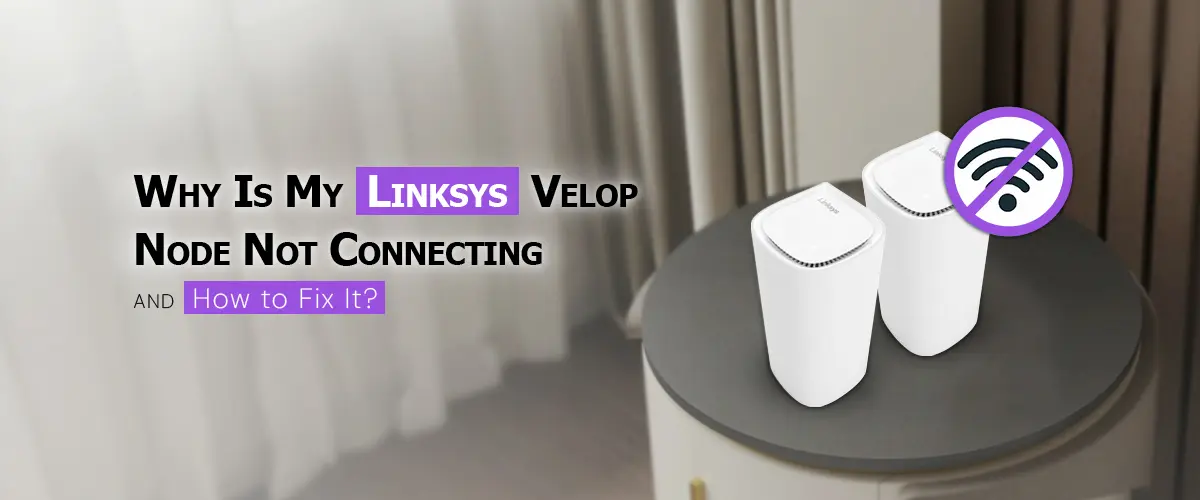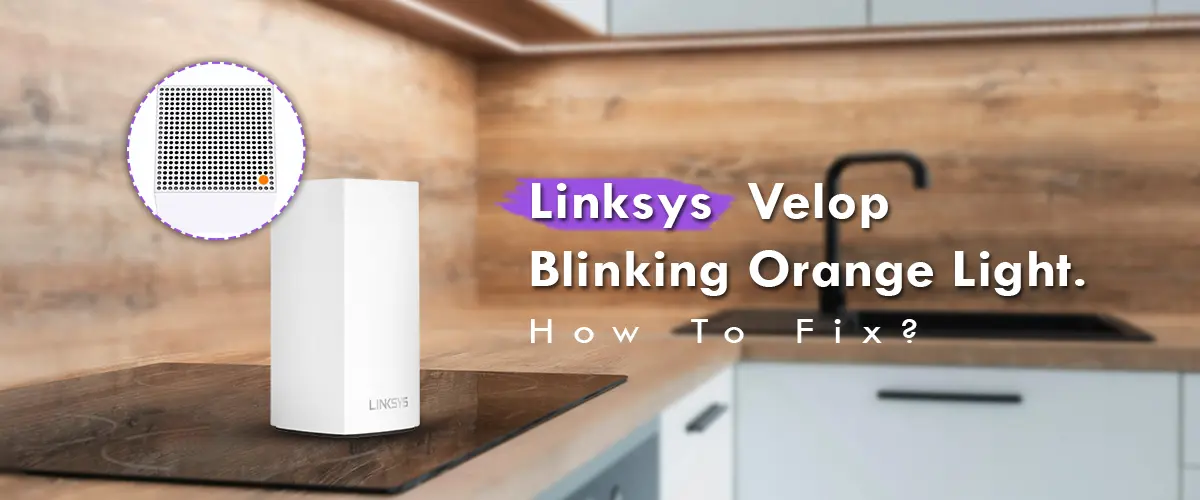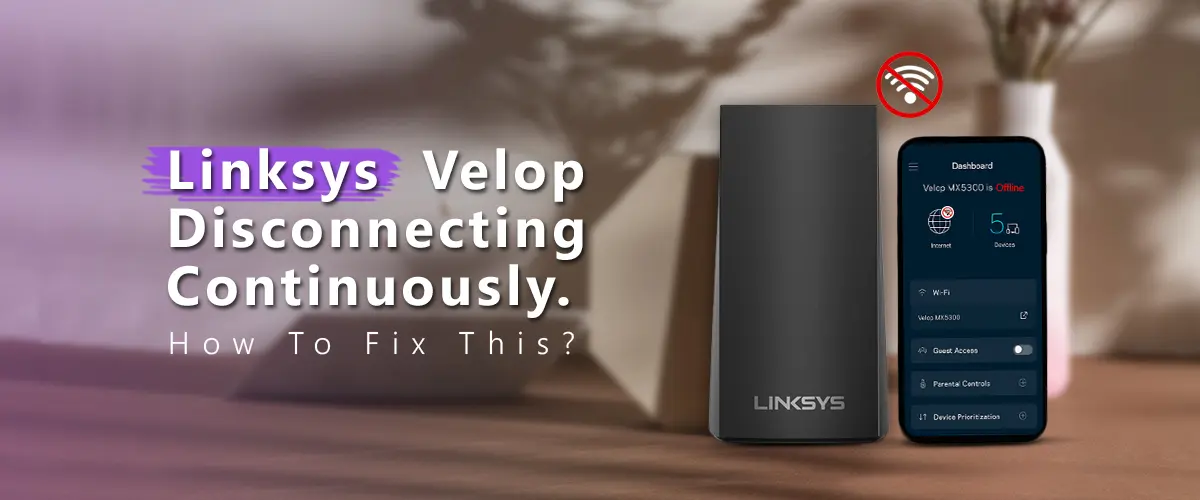
The Linksys Velop mesh Wi-Fi system connects many nodes (or satellite devices) across your house to offer seamless internet coverage. Even though the method is designed to be straightforward and effective, occasionally a Velop node may not connect. This can be annoying, particularly if it interferes with gaming, streaming, or work. In the sections that follow, we’ll examine typical causes of Linksys velop node not connecting and offer detailed fixes to restore network functionality.
Typical Causes Of Linksys Velop Node Not Connecting
It’s critical to comprehend the possible reasons of connectivity problems with your Linksys Velop nodes before beginning any remedies. Typical explanations include:
Poor Node Placement: A Velop node must be within a specific range of the primary node in order to connect without any issues. A poor Wi-Fi signal might prevent the node from connecting if it is positioned too distant from the main router.
Interference from Other Devices: Stable Wi-Fi connections can be hindered by devices that interfere with the signal, such as cordless phones, microwaves, and other routers that use similar frequencies.
Firmware Problems: Linksys fixes issues and enhances functionality by releasing firmware upgrades on a regular basis. Nodes may cease connecting due to outdated firmware.
Network congestion: It can result from excessive network consumption or an excessive number of connected devices. This might cause issues with connection for your Velop nodes.
Inaccurate Configuration Procedure: Linksys Velop Setup errors might result in a node that doesn’t sync properly. The node might not connect if the configuration was not finished or followed exactly.
Problems with Power and Connection: Inappropriate cable connections or power problems might occasionally be the cause. The node may disconnect sporadically if it lacks a reliable power source.
Keeping these reasons in mind, let’s examine how to diagnose and fix linksys velop node connecting to wrong node.
Methods for Resolving Linksys Velop Node Connectivity Problems
follow these point to resolve Linksys velop node not connecting
- Verify the Signal Strength and Node Placement.
- Ideal Positioning: Your subsidiary nodes should be positioned close to the principal node, ideally in places with unobstructed views and little obstacles, such as big furniture or walls.
- Utilize the Linksys App: This app offers capabilities for assessing node health and signal strength. If required, move the node closer to the principal node to determine the best location for each node.
- Reduce Other Device Interference
- Determine Which Devices Are Interfering: Bluetooth devices, cordless phones, microwaves, and other routers can interfere with your Velop’s signal. If at all feasible, position nodes away from these gadgets.
- Modify Wi-Fi Channels: Using the Linksys app to modify the Wi-Fi channel will sometimes lessen interference. Channel selection is frequently done automatically by the Linksys app, however if the automated setting isn’t working, you may change channels manually.
- Automatic Firmware Updates for Your Velop System:
Linksys Velop nodes are often configured to update firmware on their own. However, you may use the Linksys app or Linksys Smart Wi-Fi website to manually check for updates. Here’s how:
- Go to the Linksys Smart Wi-Fi website or use the Linksys app.
- To check for firmware upgrades, navigate to “Network Administration.”
- Install any updates that are available, then restart your nodes.
Following an update: Rebooting each node after the upgrade is necessary to guarantee the new firmware takes effect, since firmware updates frequently resolve problems and stability concerns.
- Restart the Velop Nodes or reset them.
- Soft Reboot: Minor connection problems are frequently fixed by restarting the primary and secondary nodes. To accomplish this, unplug each node for ten seconds or so, and then reconnect them. Try reconnecting the nodes using the Linksys app after they have finished powering up.
- Factory Reset: A factory reset can be required if restarting is unsuccessful. For around ten seconds, hold down the reset button on the node, which is often found on the bottom, until the LED turns red. Once the node has been reset, use the Linksys app to configure it as a new device.
- Verify That Every Node Is Set Up Correctly
- Observe the Setup Procedure: Prior to adding additional nodes, make sure the parent node is configured if Linksys velop parent node not connecting. Connection problems may arise if nodes are configured out of sequence. Click on the Linksys app. You are guided through the setup procedure by the Linksys app. To guarantee that every node is added to the network successfully, carefully follow each step.
- Manual Addition: By choosing “Add a Node” from the app menu and following the directions, you may attempt adding a node manually through the app if the automated setup isn’t functioning.
- Deal with Possible Network Overcrowding
- Limit Device Connections: Unplug any unused devices. This lessens the strain on your network and makes sure that every Velop node has a steady connection.
- Bandwidth Management: Prioritizing bandwidth is possible with some Linksys routers. To make sure they have adequate bandwidth and lessen the load on the network, you may use the app to prioritize important devices.
- Check Cable and Power Connections
- Examine the power cables: Make certain that every node has a reliable power supply. Nodes may disconnect sporadically due to loose or broken power lines.
- Ethernet Connection: Make sure the Ethernet connections are secure if your backhaul system is wired. The nodes may not be able to establish a reliable connection to the network if the link is weak or loose.
- To do advanced troubleshooting, get in touch with Linksys Support.
- Ask for Help: It might be time to get in touch with Linksys customer service if none of the aforementioned solutions work. If there is a hardware problem, they can offer advice or assist with more troubleshooting.
- Guarantee and Substitution: It can be necessary to replace the nodes if linksys velop child node not connecting. If you think there could be a hardware issue, verify your warranty status since Linksys offers warranties on its equipment.
Active Ways to Maintain the Connection of Your Linksys Velop Nodes
Take into account these proactive suggestions to prevent future linksys velop node not working problems:
- Frequent Firmware Updates: To guarantee that your nodes always have the most recent firmware, make sure automatic updates are turned on.
- Frequent Maintenance: To refresh connections and prevent any small hiccups, reboot your Velop system once a month.
- Keep an eye on network traffic: If you regularly encounter congestion, think about increasing the bandwidth of your internet subscription or reducing the number of devices linked to your Velop network.
Final thoughts
There are several reasons why Linksys Velop nodes may have trouble connecting, such as inadequate positioning, interference, out-of-date firmware, or network congestion. You should be able to locate and resolve the majority of ‘Linksys velop node not connecting’ problems by using the aforementioned troubleshooting procedures.

